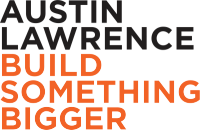In our post Making the Business Case for an Online Magazine, we summarized the role of the idea in building the case… But how do you arrive at an idea that’s big enough to get the ball rolling?
We use a guided creative process that follows the formula:
Research + Strategy + Creative = Big Idea
The central proposition here is that idea generation has to be informed by deep and humanistic knowledge of the people that you’re trying to motivate to do or think something new, thorough knowledge of the market you operate in, and a creative team and process that’s proven to yield breakout and profitable platforms from which to build your campaign.
Changing a belief is one of the hardest things to accomplish in marketing, so it’s imperative to get all this right. Do the hard and expensive work of getting to know your ideal customers through persona research. Involve your subject matter experts and front line salespeople at each stage to infuse the insights gained with understanding of what’s transpired, succeeded and failed before.
Allow the creative process the time and resource it needs to evolve — it’s the least predictable part of the foundational work you’ll sponsor but this is where transformational insight happens. It could take a few days, weeks or even a couple of months to imagine and elucidate one or two creative platforms. And there might be some iteration required to get to the best result.
And then be prepared to rigorously evaluate and ultimately defend a creative solution to the business problem at hand. This last bit, defending the idea, is where client executives earn their stripes. The kinds of ideas we aim to generate make people uncomfortable the first time they hear them. They take a while to become accepted. They need care and nurturing from marketing leadership to become an accepted part of the organization’s strategy and go-to-market plan. Without this leadership no truly breakout idea can survive to see the light of day.
Strategy can be broken down into two distinct components: creative and business model. The creative is the spark, the unique insight that fuels the idea. It’s best if it’s drawn from an attribute, aspiration or experience that’s shared by many in your desired audience.
Listed below is the general process we go through to develop a market-moving creative platform. We vary the specifics depending on the situation at hand (a startup may not have enough customers to support a survey, as an example). Sometimes the solution is so painfully obvious that we don’t need to go through all these steps, and we’ve also uncovered insights that were so completely new that trademarks needed to be secured before the ideas could be surfaced. So here we go:
Meet with client sponsors / executive leadership. Marketing is being tasked with solving a strategic problem, so we need to get the problem statement from the c-suite. This can be really specific (we are struggling to build pipeline or we need to successfully launch product X), or it can be more general (we need to differentiate ourselves in a crowded market with many substitutes). Be careful not to jump the gun on prescribing a solution nor letting the CEO solve the problem for you — it’s much too early and you’ll likely miss big opportunities to change the outcome (if it was that easy it would already have been solved).
Interview client SMEs, customer success reps and sales people. These people literally feed and keep the fires burning. They have nuanced understandings of the marketplace, competitors and clients that are invaluable to understanding what might be possible, what’s never been tried, what’s failed before and why, and much more. We use a structured interview guide so that we can get multiple perspectives on the same issues, but we also give the interviewer latitude to follow the interview where it goes.
Perform secondary research. Read trade magazines and top blogs in the vertical market, download research by others (analysts, vendors, etc.) and get a handle on what the big issues are. Get yourself as familiar as possible given the constraints of your statement of work or budget.
Survey the ideal customers. By now you should know enough to ask good questions in a survey format. You’ll have uncovered some issues and have an inkling of what a solution might look like. You’re intimate with the subject matter and how customers relate to the solution. The survey will help you validate larger issues you’ve uncovered and if you structure it to allow free-form responses, you might also get some new insights to work into your creative process.
Build personas. We’re going to need them if we are to have an effective content marketing campaign (regardless of form). We interview clients and ideally those who didn’t buy or have canceled. Again, we use a structured interview guide to ensure we get multiple points of view on issues that have surfaced so far. Persona research best practices include going beyond solution attributes and benefits. We want to know what makes these people tick, what they hope to achieve in their careers and how the solution fits in — and doesn’t. The output of this step is personas and much more. Insights gained here are critical to the brainstorming process that’s about to take place.
Brainstorming meetings and presentation. Share the results with your creative team and set aside some time to let the information sink in. Then have a couple of 90-minute brainstorm sessions where you try to make sense of all the findings. We often include client SMEs and marketing leadership in these sessions to make it more of a co-creation exercise than delivering as “received wisdom.” We walk through all the results to date and work toward an agreed vision for what’s happening in the market. We might not yet have the creative idea, but we could be very close. In the days and weeks ahead, we build a presentation that brings everything we’ve learned together, and interestingly, it’s sometimes at this point that the big idea is inspired.
The big idea. Now that the team has been living and breathing this assignment for what might be 6-8 weeks, ideas begin to flow. We convene a last brainstorm to collect any ideas that haven’t been discussed yet (yes, we’ve even had the big idea happen in the shower) and then rank them for fit to the client problem and strategy. With one or two ideas that we want to put forward, we’ll build out the idea(s) in a few slides and then provide the rationale and how it fits in with the overall plan as agreed. We also may do a trademark search, see if relevant URLs are available, etc., to round out the package.
The whole process takes six to 10 weeks to complete. Then you (the client) has to do the important work of selling the idea internally. This means making a business case for the project, including the big idea. You can read about that in our post, “The Business Case for Your Brand to Publish an Online Magazine.”
Want to talk about infusing your thought leadership strategy with market moving ideas? Click here to access my calendar. Happy to help you exercise your ideas and share more insights from our experience. The content of this post is related to our six-step methodology to ensure custom publication success —we call it Content2Revenue, and you can read more about it here.






